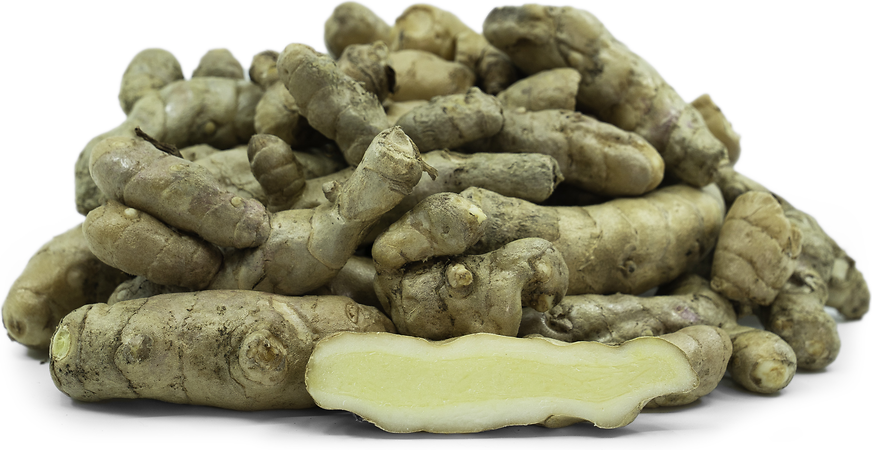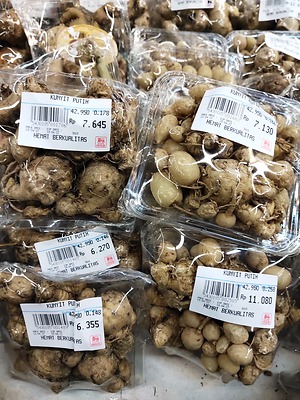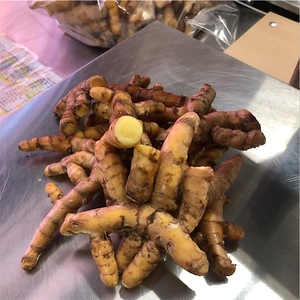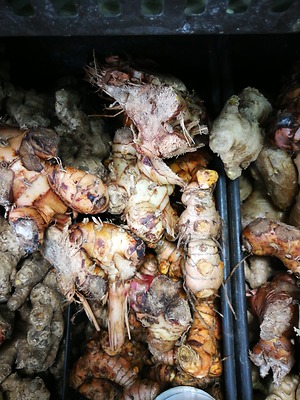


White Turmeric
Estimated Inventory, lb : 0
Description/Taste
White Turmeric root resembles ginger in its shape and size. Each rhizome, or underground stem, is multi-branched with nearly transparent, pale-brown skin that will darken with maturity. Each rhizome and off-shoot can measure anywhere from 5 to 12 centimeters long. The flesh is a pale ivory to light yellow and has an aroma that combines unripe, green mangos and ginger with the earthiness of a carrot. White Turmeric root has a bitter flavor and has a mild pungency very similar to ginger.
Seasons/Availability
White Turmeric root is available in the spring and through the fall months.
Current Facts
White Turmeric root, also commonly referred to as Zedoary, is scientifically classified as Curcuma zedoaria. It is the subterranean stem of a tall, lance-bladed tropical flowering plant In Hindi, it is called Amba Haldi, which translates to “mango turmeric” referring to its camphorus, green mango aroma. The roots are well-known in Indonesia and India, as Shoti, where they are cultivated and used for both medicinal and culinary purposes.
Nutritional Value
White Turmeric root is a good source of starch and therefore energy. The root contains volatile oils which offer medicinal benefits. The oils contain curcumin, a powerful anti-inflammatory, and other compounds that provide antimicrobial, antifungal, antiulcer, antivenom and anticancer benefits.
Applications
White Turmeric root is used in its raw form as well as in powdered form. In India, fresh “Mango ginger” is washed and peeled and then cut or sliced into strips and pickled or sliced into thin rounds and served atop green salads. In Indonesia, White Turmeric is cut into pieces and dehydrated, oven or air-dried and powdered for use as a dried spice. In larger quantities, the powder is used as a substitute for arrowroot or barley. In Thailand, young roots are used as a vegetable and in curry pastes. Fresh White Turmeric can be stored in the refrigerator for up to 2 weeks. The peeled root can be frozen for up to 6 months.
Ethnic/Cultural Info
White Turmeric root has been used in Traditional Chinese Medicine and Ayurvedic medicine for centuries. The root is juiced and used as a blood purifier, as an anti-poison, and a treatment for colic and other digestive disorders. In addition to its use as an ethnomedicinal plant, Amba Haldi is cultivated for use in baby food, perfumes and skincare products.
Geography/History
White Turmeric root is believed to be native to the Himalayan region of northeastern India. Cultivation of the beneficial plant dates to ancient civilization. It was brought to Europe by Arabic traders and explorers along the spice routes. Today, White Turmeric is grown in northern and western India, . They can be found in specialty markets and in sub-tropical and tropical areas.
Recipe Ideas
Recipes that include White Turmeric. One











